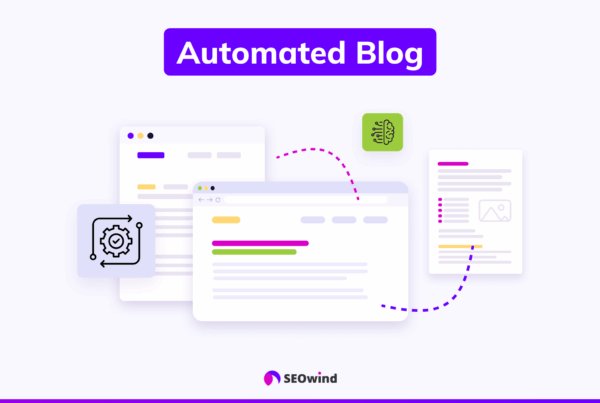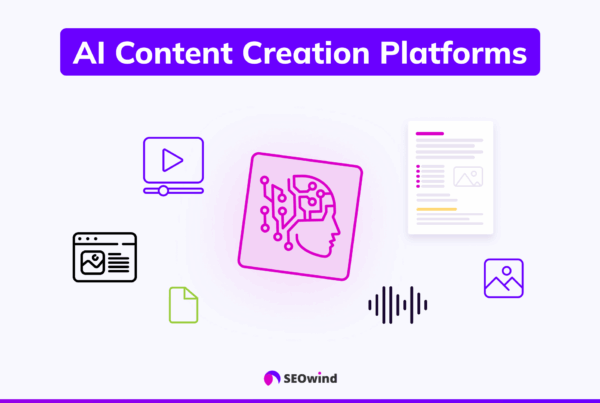The digital world is awash in content increasingly crafted by AI rather than human writers. While AI can be a powerful tool for generating text, it often lacks the nuance, depth, and personalization that makes writing engaging and trustworthy.
Have you ever read a blog post or an article that just felt… off? It might have been AI-generated. But how can you tell for sure? This article will provide the tools you need to spot AI-generated content and equip you with the knowledge to spot it easily.
Key Indicators of AI-Generated Content
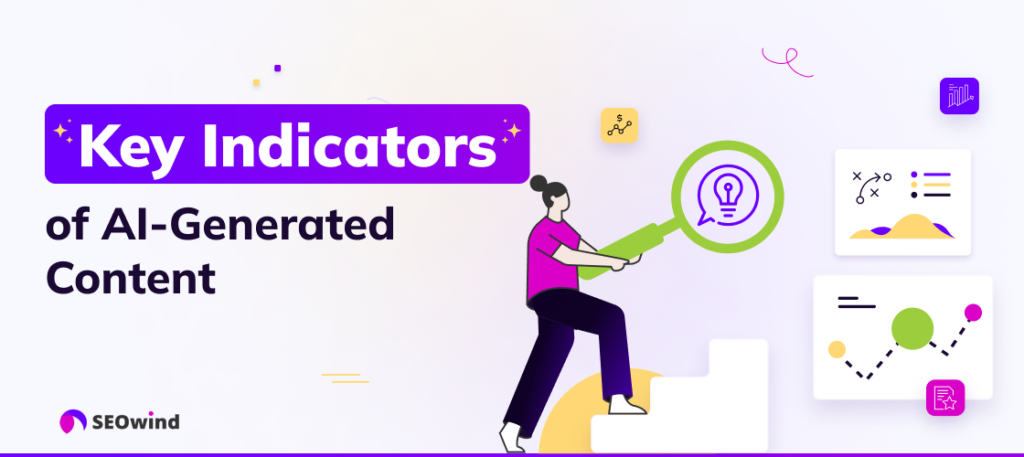
Let’s start by exploring signs that a piece of content might not be written by a person.
Inconsistencies in Tone and Style
Imagine reading an article that starts with a formal, academic tone and suddenly shifts into casual, conversational language. This jarring inconsistency is a typical red flag that identifies AI-generated content. While impressive in their ability to mimic human language, automated models struggle to maintain a consistent tone and style throughout longer pieces of text.
Repetitive Phrases and Lack of Nuance
AI writing often relies heavily on predictable sentence structures and repetitive phrases. Because these models learn by analyzing massive datasets, they sometimes default to using the most common expressions and patterns, resulting in robotic and unoriginal content. It’s like listening to a broken record—the tune might be familiar, but it lacks the spontaneity and improvisational flair of a live performance.
Generic Information and Lack of Depth
Though AI-generated content excels at presenting information in a clear and concise manner, it often falls short when attempting to provide unique insights or greater depth. Think of it like reading an encyclopedia entry. You’ll get the basic facts but won’t find the kind of insightful analysis or thought-provoking arguments that a human expert could provide.
Absence of a Personal Touch
One of the hallmarks of authentic human writing is the ability to connect with readers on a personal level. Human writers inject their personality into their work through shared experiences, relatable anecdotes, or a touch of humor. AI, on the other hand, lacks the capacity for genuine emotional expression or personal reflection.
Monotonous Tone and Flawless Grammar
Ironically, while we often associate grammatical errors with subpar writing, their absence can sometimes be a telltale sign of AI authorship. These automated models are typically trained to produce grammatically perfect text, which can result in a monotonous and robotic tone. Still, 49% of marketers report that AI tools successfully generate clear and easy-to-read text.
Watch for other indicators to confirm your suspicions about the content’s true author.
Unusual Formatting and Structure
Imagine reading a blog post in which the headings are inconsistently sized, bullet points are randomly scattered, and paragraphs jump between different topics without a logical flow. While humans generally strive for coherence and readability, AI might prioritize keyword stuffing over a smooth, natural flow, resulting in strange and ill-conceived formats.
Inaccurate facts and claims
AI models learn from the data they are trained on, and if that data contains errors or biases, the AI will likely reproduce them. Keep an eye out for statistics that seem off, dates that don’t add up, or events attributed to the wrong people or time periods. Remember, AI doesn’t inherently understand the information it presents. It’s simply stringing together patterns it has observed.
Missing sources
Credible content relies on evidence and sourcing. When you come across bold claims or statistics without any sources to back them up, it could be a sign that an AI has generated the text. While AI models can produce human-like text, most are less capable of conducting thorough research and citing sources appropriately.
Generic explanations without details
AI-generated content might provide surface-level explanations without providing nuance. These assets typically lack the kind of specific examples and real-world experiences that illustrate their key points. This lack of depth and detail can be a giveaway that you’re reading something generated by an algorithm rather than a human expert.
Absence of personal experience
Humans write from a place of personal experience and understanding. They share anecdotes, opinions, and unique perspectives that shape their writing voice. Conversely, AI-generated content often lacks this personal touch. While it can mimic human language, it doesn’t have the lived experiences that shape our perspectives and make our writing relatable. When a piece of content feels devoid of personal insight or emotion, it might be a sign that it’s AI-generated.
Words and phrases indicating that content is AI-generated
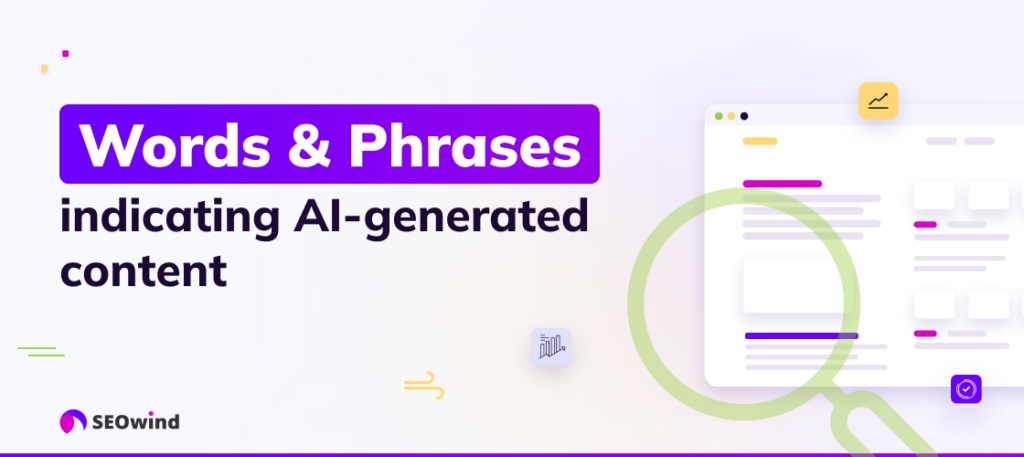
Although AI writing tools are getting increasingly sophisticated, they often leave telltale signs in their writing.
One of the biggest giveaways is the overuse of certain words and phrases. These are often terms that AI models recognize as common or “safe” choices, lacking the human touch in word selection.
Stanford University has found 4 words stick out more than any other:
- Realm
- Pivotal
- Intricate
- Showcasing
The graphs below show that usage of all of these words remained steady from 2010 to 2022. Then up pops ChatGPT in November 2022, and you can see the use of all four words soar.
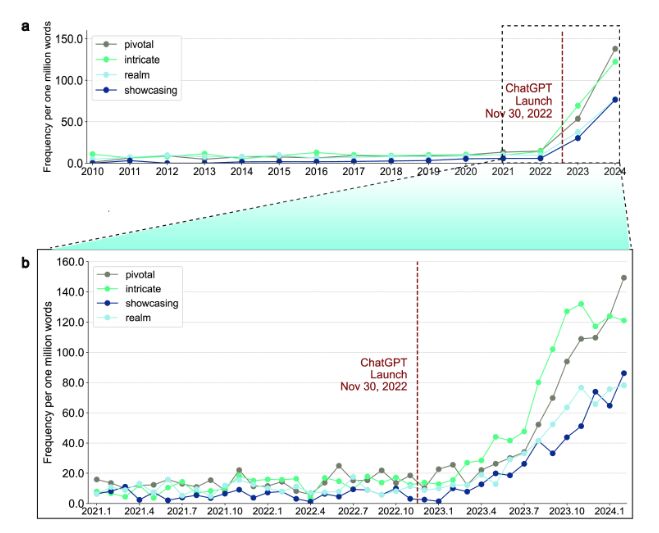
Similar findings apply to the following words:
- commendable,
- innovative,
- meticulous,
- intricate,
- notable,
- versatile.
LLMs are much more likely to use these words than humans.
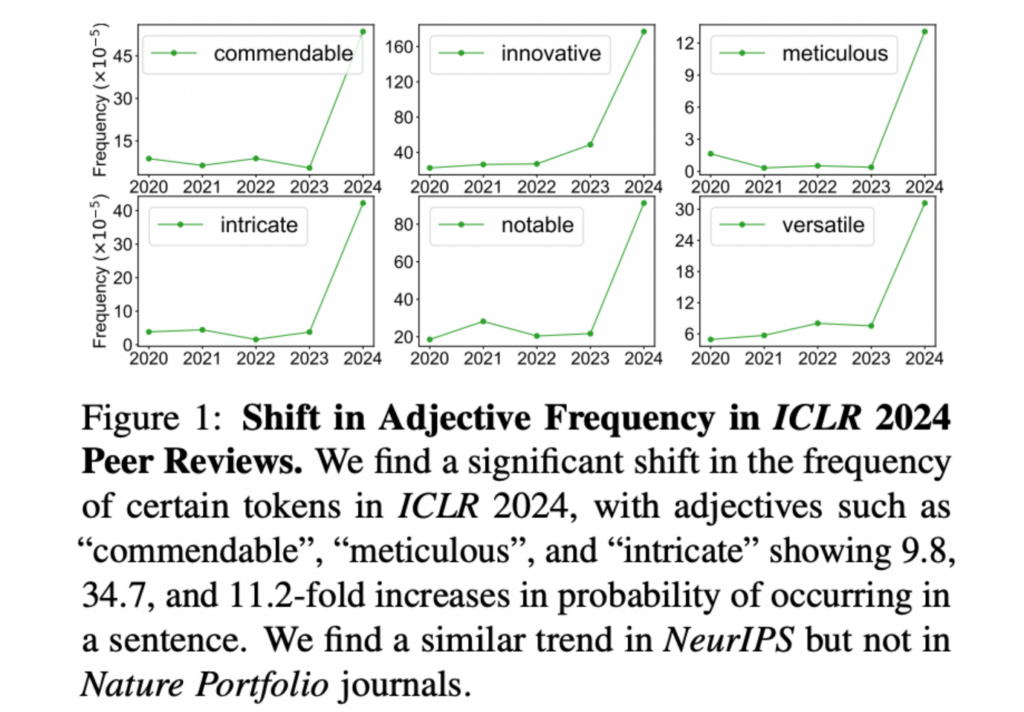
Similarly, AI-generated content often leans heavily on phrases like:
- In conclusion
- To summarize
- As a result
- In addition
- Furthermore
Below, I collected a list of the phrases that are typically perceived as AI-generated:
Verbs (Action-Oriented)
- Leverage
- Embrace
- Drive
- Embark
- Unleash
- Navigate
- Elevate
- Delve
- Discover
- Supercharge
- Unlock
- Tailored
- Dive
- Weighing
- Harness
Nouns (Concrete or Abstract Concepts)
- Voyage
- Imperative
- Beacon
- Esteemed
- Game-changer
- A treasure trove of information
- Tapestry
- Hurdles
- Bustling
- Realm
- Depicted
- Connection
- Entanglement
- New Era
- Realm
- Adventure
- Journey
- Navigation
- Craft
- Unliving
- Pride
- Multifaced / Multifaceted
- Picture
- Architect
- Bespoke
- Elegant
Contextual and Circumstantial Phrases
- Amidst
- In the dynamic world of
- In the fast-paced
- In a sea of
- Ever-evolving
- It’s not only X, but Y
Other Descriptive Adjectives and Adverbs
- Insurmountable
- Unprecedented
- Eerie
- Poised
- Enrich
- Meticulously
- Grappling
- Eliciting
- Crafting compelling and concise
- Dazzle
While these phrases are grammatically correct, their overuse can be a dead giveaway of AI authorship.
Advanced Techniques to Spot AI-Generated Text
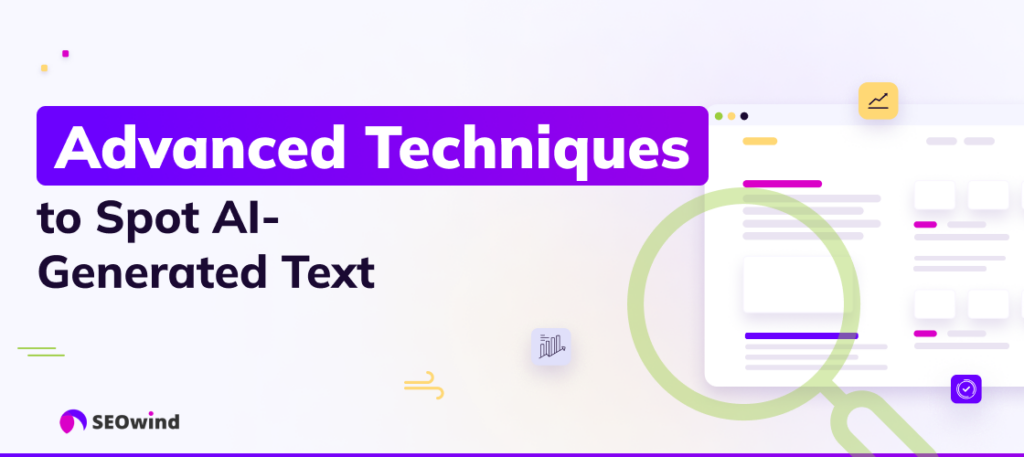
While the previous indicators provide a solid starting point for identifying AI-generated content, mastering more advanced techniques can significantly boost your ability to detect this kind of material. Let’s cover some more sophisticated strategies.
Evaluating Context and Logical Flow
Imagine reading a story in which a character is described as “tall and muscular” in one paragraph but struggles to lift a heavy box in the next. This inconsistency in character description and actions would be a massive clue of AI involvement.
AI can sometimes struggle to maintain consistent logic and coherence throughout a longer asset. Pay close attention to how smoothly the information flows from one sentence to the next and from one paragraph to another. Does the text effectively connect ideas? Are there any abrupt transitions or logical inconsistencies? Detecting these subtle inconsistencies can help you differentiate between human-written and AI-generated content.
Identifying Lack of Creativity and Surprise Elements
Think about your favorite novel or an engaging short story you recently read. What made it captivating? Chances are, it wasn’t just the plot but also the author’s unique voice, creative use of language, and unexpected twists and turns that kept you hooked.
While it has become increasingly sophisticated, AI-generated content has a tough time replicating this level of creativity and originality. It tends to follow predictable patterns and lacks the human touch that makes writing truly engaging. Look for signs of originality, such as unusual metaphors, witty observations, or surprising turns of phrase to recognize human-written content.
Assessing the Use of Idioms, Slang, and Cultural References
Idioms, slang, and cultural references are deeply ingrained in human language. We use them naturally to add color to our writing and connect with our readers on a shared cultural level.
However, AI models don’t use these linguistic nuances well. They might misinterpret idioms, misuse slang, or completely miss cultural references. Pay attention to how naturally and accurately these elements are incorporated into the text. If something feels off or out of place, it could be a sign that AI is behind the writing.
The Limitations of Current AI Detection Methods
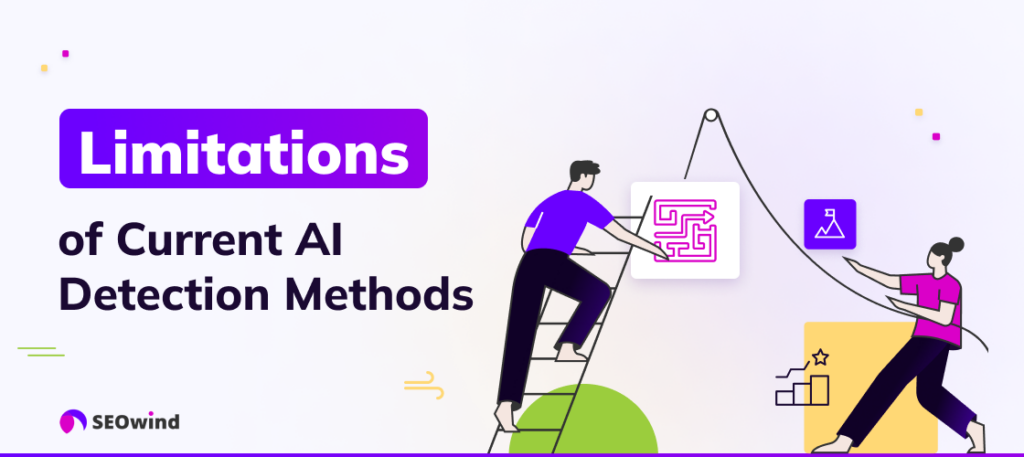
While various methods and tools are emerging to help us spot AI-generated content, it’s crucial to acknowledge their limitations. It’s similar to developing a new vaccine. As quickly as scientists make progress, the virus evolves, making it a constant game of catch-up. AI technology is rapidly advancing, making it increasingly difficult for even the most sophisticated detection methods to keep pace.
Challenges in Detecting Highly Sophisticated AI Texts
The challenge intensifies with highly sophisticated AI models. These advanced models are designed to mimic human language patterns with remarkable accuracy. They can produce text that’s hard to distinguish from human-written content, making it harder to detect based solely on textual features.
Tools for Detecting AI-Generated Content
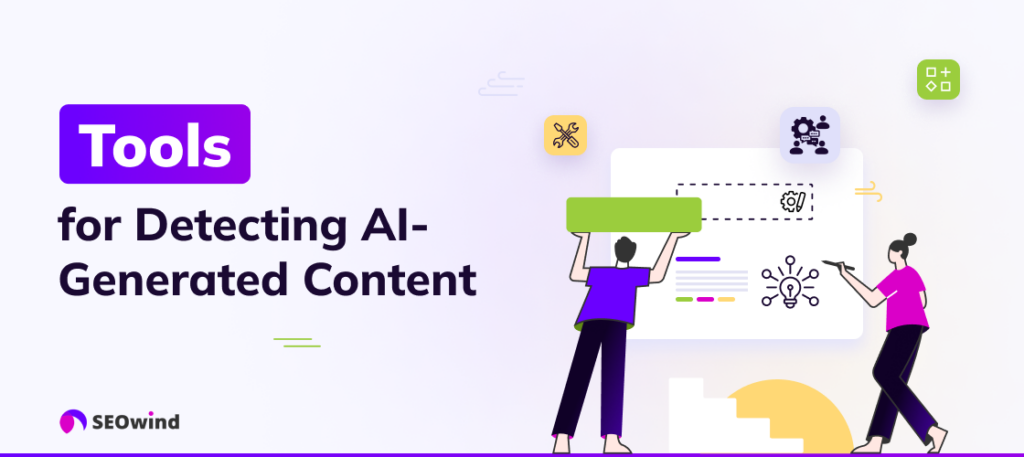
Navigating the digital world now requires a discerning eye for authenticity. With the rise of strikingly human-like AI content, it’s becoming much trickier to differentiate between human-crafted text and AI-generated content. Let’s take a look at two popular AI detection tools.
Overview of Popular AI Detection Tools
- Originality.ai: Originality.ai is particularly favored by website publishers and content agencies. It meticulously analyzes text to sniff out potential AI involvement from models like ChatGPT or GPT-3.
- GPTZero: Created by a Princeton student, GPTZero primarily focuses on identifying AI-written text, particularly from models like ChatGPT. It’s gaining traction among educators and has even been integrated into some educational platforms.
Best Practices for Using Detection Tools Effectively
While these tools are incredibly helpful, if you want to maximize their impact, you’ll need to utilize some best practices:
- Combine Tool Analysis with Your Judgment: AI detection tools are powerful allies, but they shouldn’t replace you and your ability to think critically. Use them as a starting point.
- Stay Updated: AI technology is constantly changing, with new tools and technologies emerging frequently. Stay informed about the latest advancements in AI detection.
- Context is Key: Tools work best when you consider the context of the content and the potential motivations behind its creation.
- Use Multiple Tools: Just like getting a second opinion, using multiple AI detection tools can provide a more comprehensive analysis and increase confidence in your assessment.
- Be Aware of Limitations: AI detection tools are still under development and may not always be 100% accurate. For example, if you copy and paste the US Constitution into Originality.ai (https://originality.ai/ai-checker), the tool indicates that the document is 85% AI-written.
Impact on SEO and Web Content Integrity

The rise of AI-generated content has significant implications for SEO and web content integrity. As AI technology evolves, it becomes increasingly important to understand how it affects search engine rankings and the overall trustworthiness of online information.
Google’s Stance on AI-Generated Content
Google’s primary goal is to deliver relevant and valuable content to its users. While AI-generated content isn’t inherently against Google’s guidelines, the search engine giant emphasizes the importance of content quality and user experience. Google focuses on rewarding high-quality content that demonstrates expertise, authoritativeness, and trustworthiness (E-A-T). If AI-generated content lacks these qualities, it might not perform well in search results.
Google’s algorithms are continuously updated to detect and penalize websites using AI-generated content solely to manipulate search rankings. The search engine encourages creators to use AI as a tool to enhance content quality rather than replace human creativity entirely.
Maintaining Ethical Standards in Online Content
The growing use of AI in content creation raises ethical questions. While AI can be a powerful tool for good, it presents potential risks if misused. For instance, AI-generated content can spread misinformation or create biased narratives.
Content creators and website owners must prioritize ethical practices when using AI to generate content. Transparency is essential, meaning that you need to disclose the use of AI in content creation to maintain trust with your audience. In addition, focusing on delivering value to the reader, ensuring originality, and upholding ethical standards are all crucial for building a reputable online presence. As AI continues to shape the digital landscape, it’s our collective responsibility to use this technology ethically and responsibly.
SEOwind – how we make AI content more meaningful
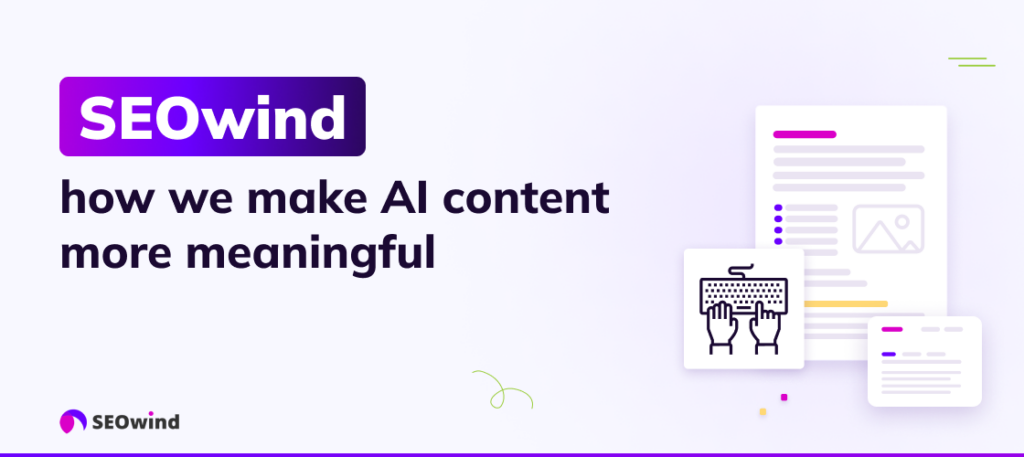
You might be thinking, “Okay, AI sounds helpful, but how can I ensure the content still reflects my unique voice and expertise?” That’s where SEOwind comes in. SEOwind isn’t just another AI content generator. We are firm believers in the CyborgMethod™, which is a fancy way of saying humans and AI work best as a team.
We add Statistics and Quotes
Have you ever read a research paper with zero statistics and thought, “Wow, that’s convincing!”? Probably not. That’s why SEOwind automatically adds relevant statistics and quotes with proper citations. For example, did you know that “82% of marketers agree that AI-generated content is as good or better than human-generated content“? See, it makes you pay attention!
You can define your brand voice
We know that you’ve worked hard to build your brand’s voice. Whether it’s professional, playful, or quirky, SEOwind allows you to define your preferred tone of voice and style. This means the AI learns to write just like you would – only faster.
We add internal links
A well-placed internal link can do wonders for SEO and the user experience. SEOwind automatically suggests relevant internal links throughout your content. It’s like having a little helper who organizes and connects all your brilliant thoughts.
You can add your insights
The best part is that you’re still in the driver’s seat! SEOwind handles the heavy lifting – research, structuring, and first drafts. This frees you up to focus on what you do best: infusing your unique insights, experiences, and expertise into the content. Ultimately, we believe that the best content is created through the collaboration between human creativity and AI efficiency.
Frequently Asked Questions (FAQs) on spotting AI-generated content
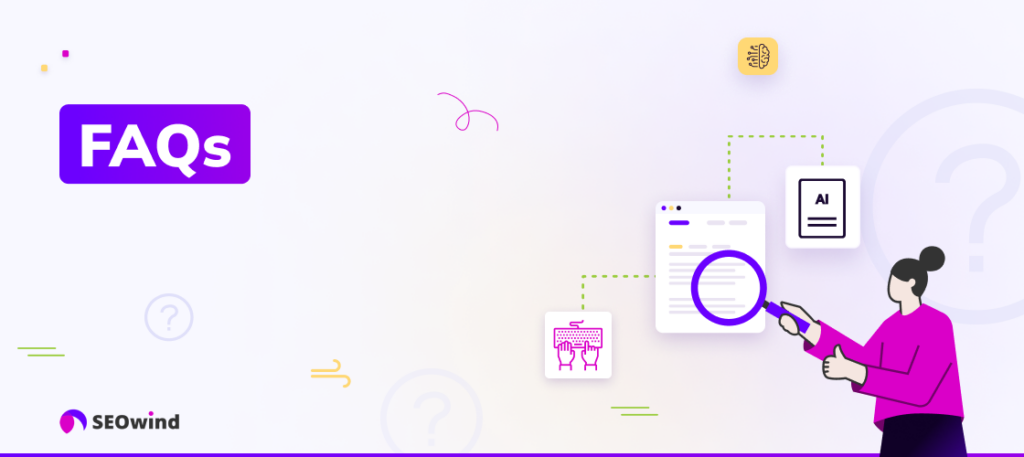
Let’s tackle some common questions about spotting AI-generated content.
How can I spot AI-generated comments?
Spotting AI in comments can be tricky, as the text tends to be short. Look for these telltale signs:
- Generic Phrases: Comments like “Great article!” or “Very informative” that lack specific insights.
- Repetitive Responses: Multiple comments using the same phrases or sentence structures.
- Lack of Relevance: Comments that seem off-topic or disconnected from the conversation.
If a comment feels impersonal and robotic, it might be AI-generated.
How Reliable Are AI Detection Tools?
AI detection tools are helpful but not foolproof. They use algorithms to analyze text patterns, but AI writing styles constantly change, making detection tools’ work challenging.
It’s a game of cat and mouse. As AI gets better at mimicking human writing, detection tools need to keep pace.
Can You Improve Your Ability to Spot AI Content Manually?
Absolutely! The more familiar you become with the nuances of language and the common characteristics of AI-generated content, the better you’ll become at recognizing it.
It’s like developing an ear for music – the more you listen, the more attuned you become to subtle differences.
Are There Any Gray Areas in Using AI for Content Creation?
The ethical implications of AI content creation are still being debated. While AI can be a powerful tool for generating ideas and automating tasks, using it unethically, like creating deceptive content, is a gray area.
The key is transparency. If you’re using AI tools to assist with content creation, be open about it.
